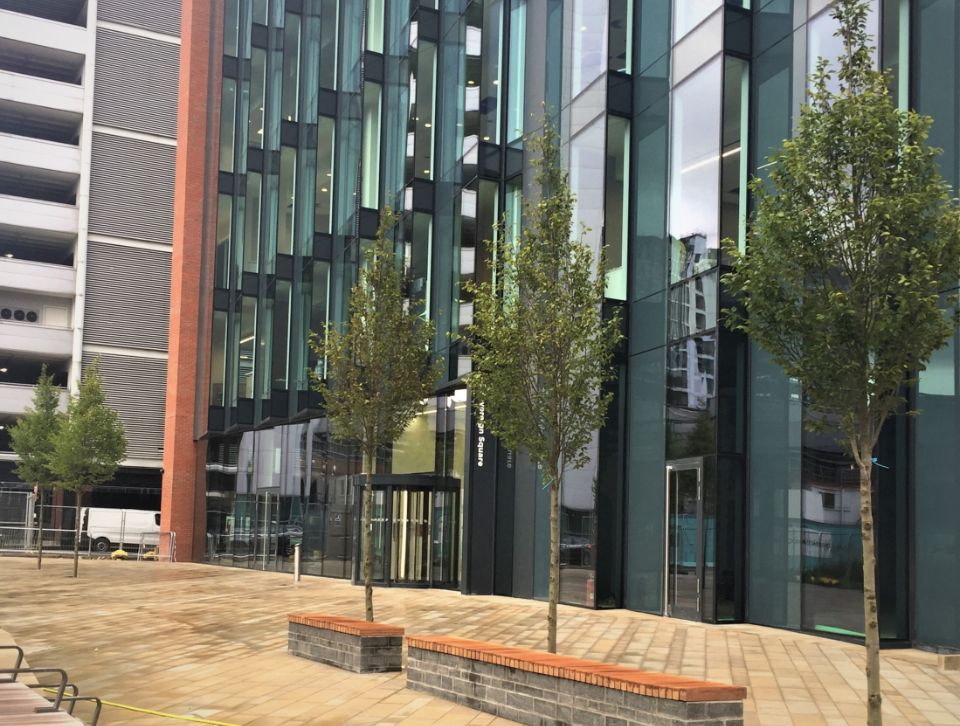Developers praise DeepRoot Silva Cells’ versatility in five-building renovation project at Waterline Square
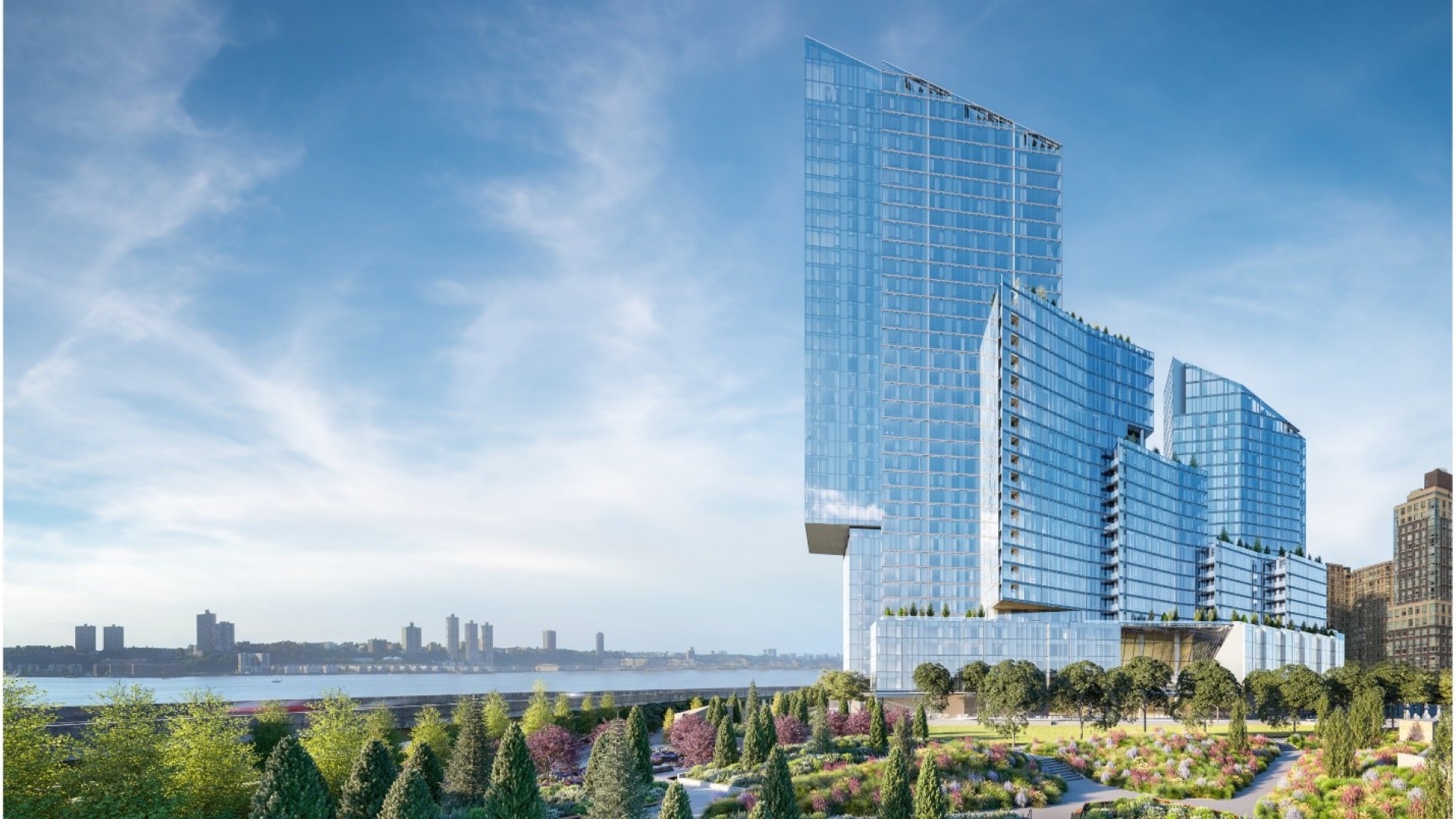
A New York City neighborhood long reserved for industrial railways and desolate parking lots, the waterfront area between Midtown and the Upper West Side now known as Waterline Square broke ground in 2012. The project included five new residential buildings as well as a welcoming open plaza in which green infrastructure was among the designers’ top priorities. The DeepRoot Silva Cells were utilized to help provide proper soil volume — a shared total of 46,000 cubic feet — for the 96 newly planted trees, establishing conditions for flourishing growth in the coming years, even in the face of rising water levels and catastrophic storm events.
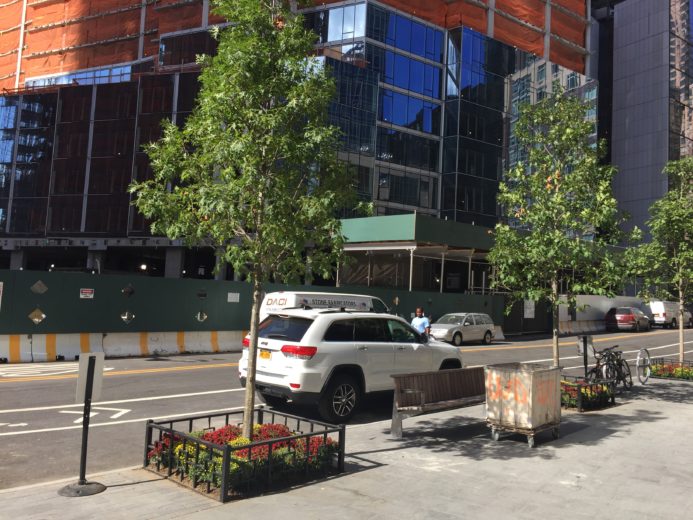
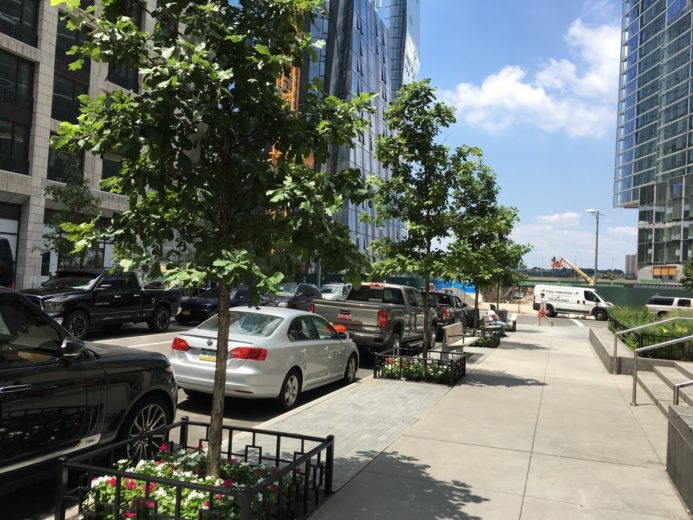
Number of Silva Cells: 1,800
Total Soil Volume: 46,000 ft3
Number of Trees and Type: 96 (Variety including Honey Locust (Gleditsia Triacanthos) Swamp White Oak (Quercus Bi- Color), and Northern Red Oak (Quercus Rubra)
Type of Project: Integrated Trees, Housing, Urban
Project Designer: MNLA
Project Contractor: Turner Construction and Harder Services
Installation Date of Silva Cells: 2016-2019
Project Timeline: 2012-2019
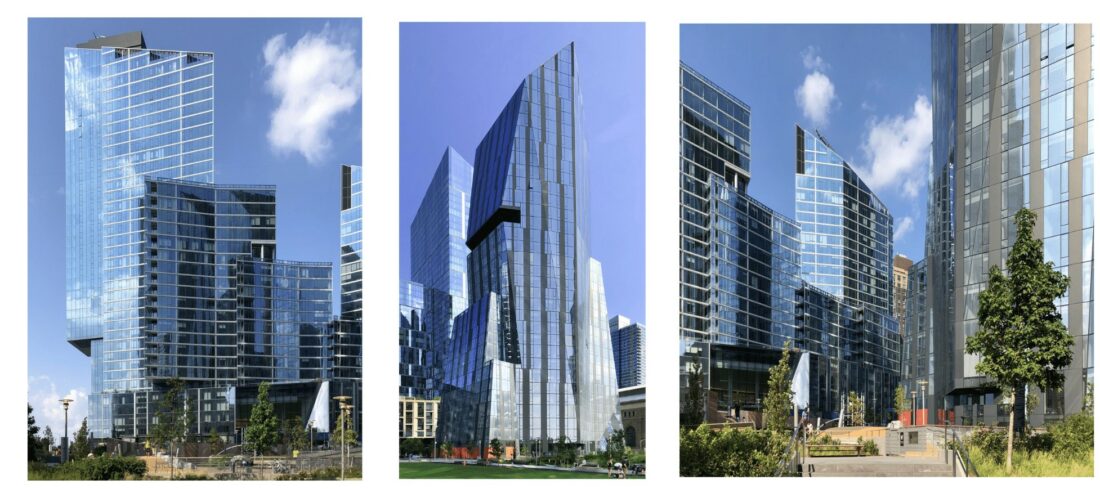
Waterline Square buildings surrounded by green infrastructure, courtesy of Michael Young with New York Yimby.
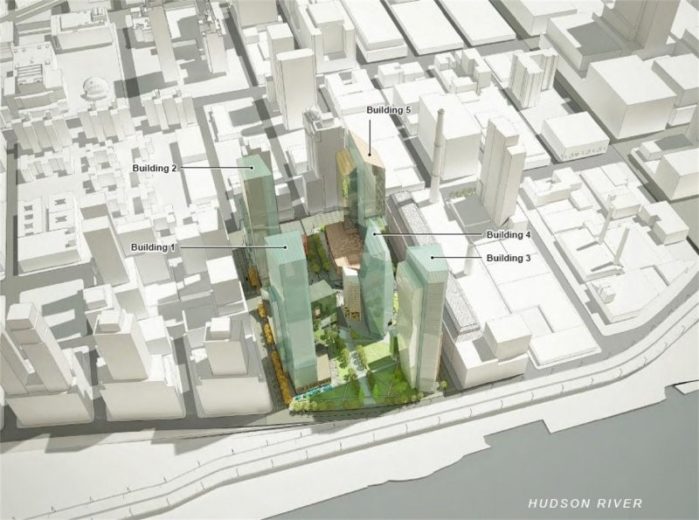
Rendering displaying each building. Photo courtesy of New York Yimby.
The waterfront area between 59th and 61st Street, along the Hudson River in Manhattan, was historically a concrete parcel of industrial land — used primarily for railroads, parking lots, and storage facilities. In its place, after seven years of construction, now sits Waterline Square: a breathtaking complex (designed by French architect Christian de Portzamparc) with five new buildings featuring luxury condos, rental space, affordable housing, schools, and dining — with an inviting green plaza as its centerpiece.
Green infrastructure was embraced from the very beginning of this ambitious renovation initiative (which, all told, boasted a price tag over $2 billion). Associates at Mathews Nielsen Landscape Architects (MNLA) incorporated into their plans a number of green elements, including eco-friendly roofs, rooftop gardens, plants, and dozens of trees.
In addition to providing suitable soil conditions for the growth of large, healthy trees, project planners also understood the potential repercussions of climate change-induced storm events — and thus, the need to address water management within the project scope. Times Hudson Valley completed a climate report in 2019 covering this issue, stating: “With increasing severity of storms comes an increase in precipitation levels, risking greater flooding. New York state is experiencing sea-level rise faster than the national and global averages. Since 1900 the Hudson River has risen 15 inches. The DEC projects that the lower Hudson River region (Kingston to New York City) could see a rise of 2-10 inches in the next decade, and anywhere from 15-75 inches of sea-level rise by the end of the century.”
In anticipation of more frequent storms and increased precipitation levels, designers took proper precautions and adopted the DeepRoot Silva Cell system, enhancing the trees’ ability to thrive for another half-century while also assisting in controlling and managing stormwater during potential flood events.
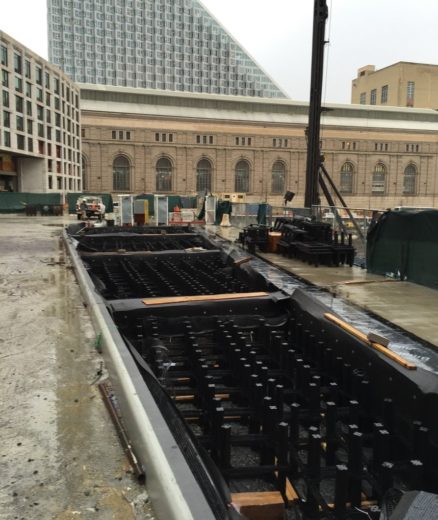
Silva Cells were installed by Turner Construction and Harder Services in front of buildings 2 and 5 (supporting a total of 32 trees) as well as within the 1.7-acre plaza itself, where another 64 trees were planted. A total of 1,800 Silva Cells were used, providing over 46,000 cubic feet of shared soil volume.
Installation was simple, noted Joe Umana of Harder Services: “The [Silva Cell] system is easy to work [with] and is designed so you can put it together in a method of layering soil and fill interchangeably. It went quick.”
Steven Efthymiou, project manager at Tishman Construction, agreed: “The installation went very smoothly, and the cells performed well in their constructability. They were easy enough for the various trades to coordinate amongst themselves, so that was a bonus. The different methods used for the on-grade applications versus the on-structure application did not slow us down a bit.”
Uniquely, most of the streetscape was built on structure with custom-designed, free-draining concrete planting beds dimensioned specifically to receive the Silva Cells. The advantages of this were numerous. For instance, they kept utilities outside the cells, thus not displacing any soil available for the trees. Likewise, they will hold a known quantity of water that is held in the pores of the sandy loam used at the site.
By investing in soil, the trees will grow larger and live longer, which also protects the client’s initial investment by reducing the frequency with which trees are replaced. MNLA has considerable experience with Silva Cells across their projects, recognizing the system’s long-lasting environmental benefits — a goal of their committed clients. At Waterline Square, designers took time to ensure that the transition from vehicular to pedestrian areas were given proper conditions for urban forestry growth: a welcoming respite from the city bustle.
Greg Leonard at MLNA highlighted the value of the Silva Cells in a project like this, observing that “Silva Cells allowed a highly complicated landscape built over structure to adapt easily to design revisions during construction without sacrificing healthy soil volumes for our trees. The flexibility of the system proved instrumental in ensuring that we could maintain both design integrity and tree health.”
DeepRoot is thrilled to be a part of this revitalization project. James Linsley of the GID Development Group echoes this excitement when discussing Waterline Square: “With this new development, we’ve transformed one of the last waterfront sites on the Upper West Side into a vibrant community with public park space, exciting upcoming restaurant and retail partners, and exceptions residences that many people now call home. We’re proud of this incredible project that is making a mark on the iconic New York City skyline and giving rare and coveted green space back to New Yorkers, and we’re proud to share this incredible development with our residents.”
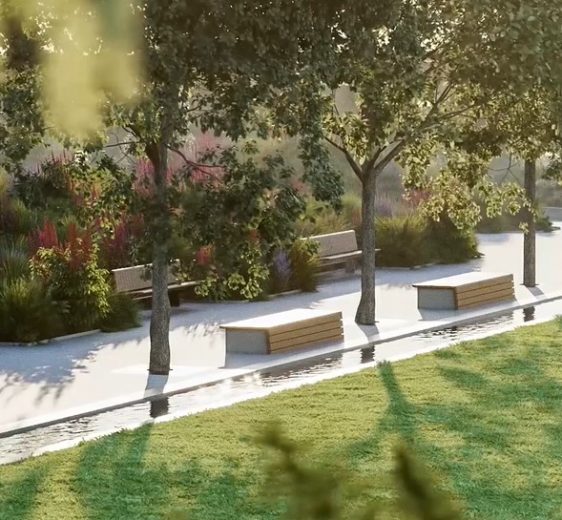
A still shot from the Waterline Square Instagram. Photo taken September 2019 within the urban park, Waterline Square Plaza.
-2019 Award for Best High Rise Apartment Community by the National Association of Homebuilders
DeepRoot has a track record of successful projects in New York City. For more information, check out some of our projects featured in the five boroughs (the Metropolitan Museum of Art and the Lincoln Center Bosque, the latter also being an MLNA project, are particularly noteworthy).
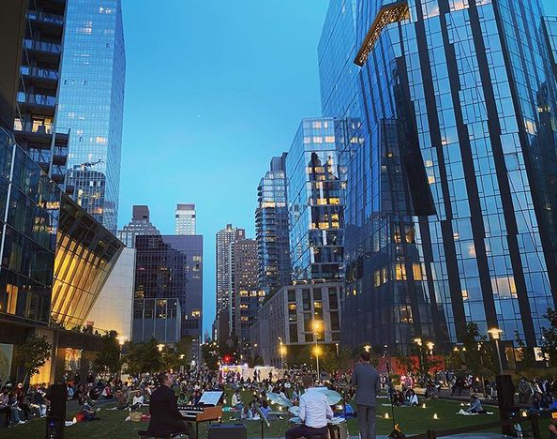
Waterline Square Park outdoor concert in October 2020. Courtesy of Waterline Square Instagram.
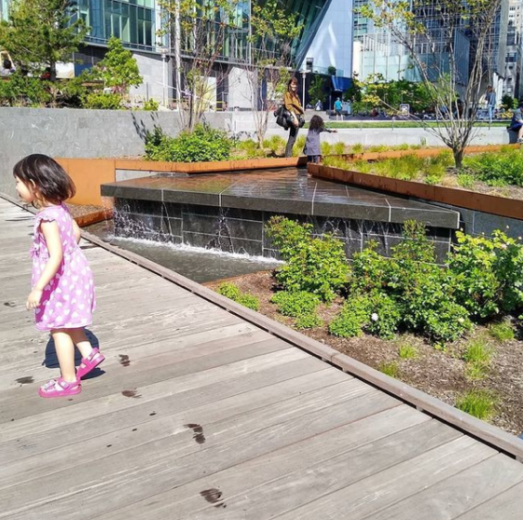
July 2020 Waterline Square Park enjoyed by children. Courtesy of Waterline Square Instagram
